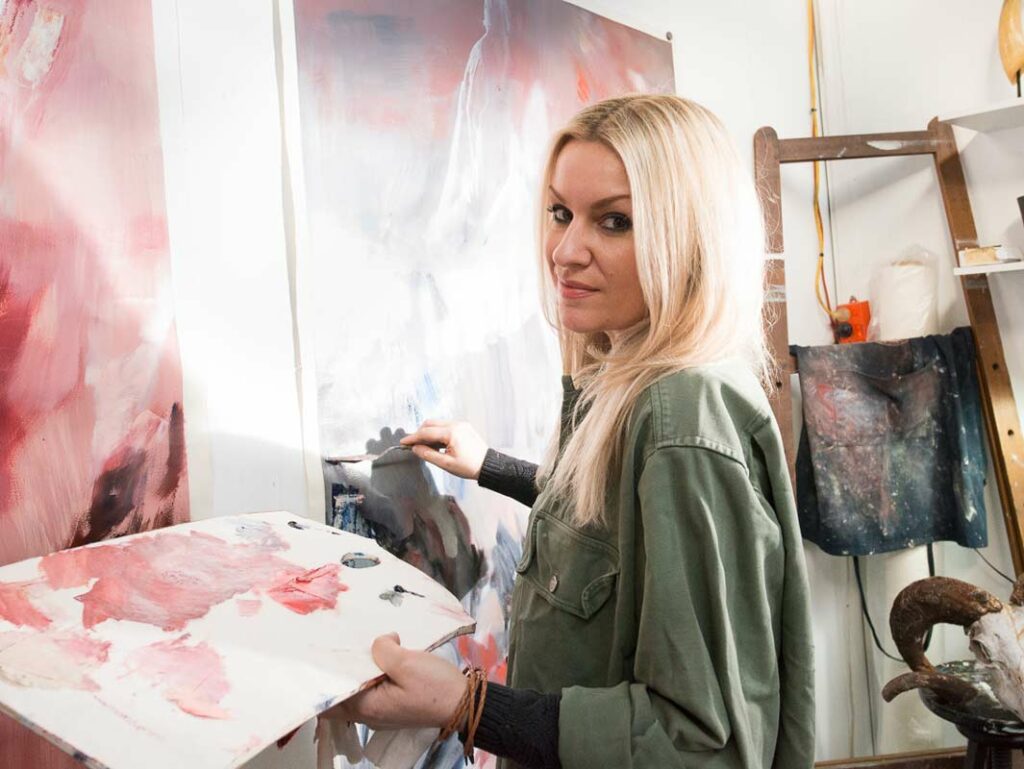Belgian born Perth based artist Stephanie Reisch’s art references pre-history, shamanistic practices and primal landscapes. Her abstract forms are created using oil paints, natural pigments and ground substrates. Through her work Stephanie seeks to take the viewer beyond physical and instinctual responses, to create a deeper more subconscious connection.
Enjoy Getting to Know Stephanie Reisch…
When did you first feel the desire to be artistic and realize you had talent?
I think it was more about realizing that being creative wasn’t negotiable! I’ve always felt compelled to explore outlets for my creativity on a daily basis and I am fortunate to have family and friends who continue to be supportive of my idiosyncrasies.
Where did you learn your art?
I completed a Bachelor of Fine Arts (Honors) and a Master of Fine Arts at the University of Western Australia.
What inspires you most?
Prehistory. Primal Landscapes. The unseen and the unknown. Natural phenomena. My work is deeply entrenched in the mysteries and power of the natural world, both past and present.
What message are you sending to the viewer of your art?
My work strives to connect with the viewer beyond the visual and transport them to a place where mind, memory, space and substance converge. I’m trying to immerse the viewer in forms that meld physical landscapes with intangible mindscapes; paintings that are as experiential as they are material and ephemeral as they are corporeal. All my paintings herald ancient forces in one way or another.
Describe your studio…
I have a private studio within a large warehouse located in Burswood. It is bright, spacious and filled with interesting natural curios that I have collected over the years such as animal skulls, plants and intriguing rocks. There is a large purple couch at the far end of the room that I refer to as ‘Procrastination Point’. I spend a lot of time reflecting on the progress of a painting from back there.
Describe your typical day of creating art
I am not a morning person by choice so I tend to get in around midday and work until 5pm or so. Then I go home for a while and head back in around 10pm. Quite often I’ll stay until the sun comes up if I’m working towards a deadline. Nighttime is my preferred time to work as the world is asleep and everything is quiet.
What mediums do you use and why?
Although I also work across drawing, sound and digital media my practice is predominantly situated in painting. I work with oils on canvas and in recent years have developed a fascination for working with natural pigments and obscure grounds and substrates. Overall I love the complexity and durational properties of oil paint.
What are you working on now?
I am currently working on a new body of work for a solo show in September with Linton & Kay, a couple of private commissions and developing ideas from a recent residency at Curtin University.
What are your recent career achievements you feel proud of?
2018 was a big year for me with two major solo exhibitions, two artist residencies and a number of group shows and corporate commissions. Towards the end I was feeling pretty exhausted but also proud of what I had accomplished. It is important that I continue to feel challenged and stimulated in my line of work so I like to take on multiple projects at one time. It was also really nice to receive a feature article in Artist Profile Magazine and have my work recognized at a national level.
What do you love most about what you do?
I love all the highs and lows of being an artist. It’s a raw and humbling experience that demands authenticity. Being able to take my dogs into work is also pretty great.
Where can you see yourself in 10 years time?
On the national gallery circuit and hopefully exhibiting internationally as well. I’d love to be curated into some major shows and present my work to a broader audience.




Stephanie Reisch Sold Paintings
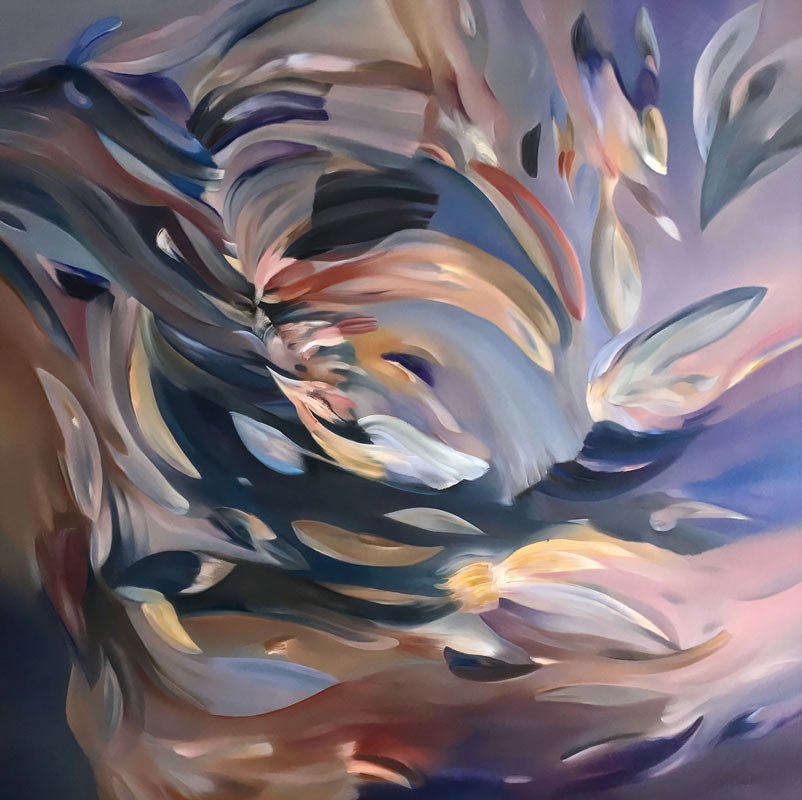
120cm x 120cm
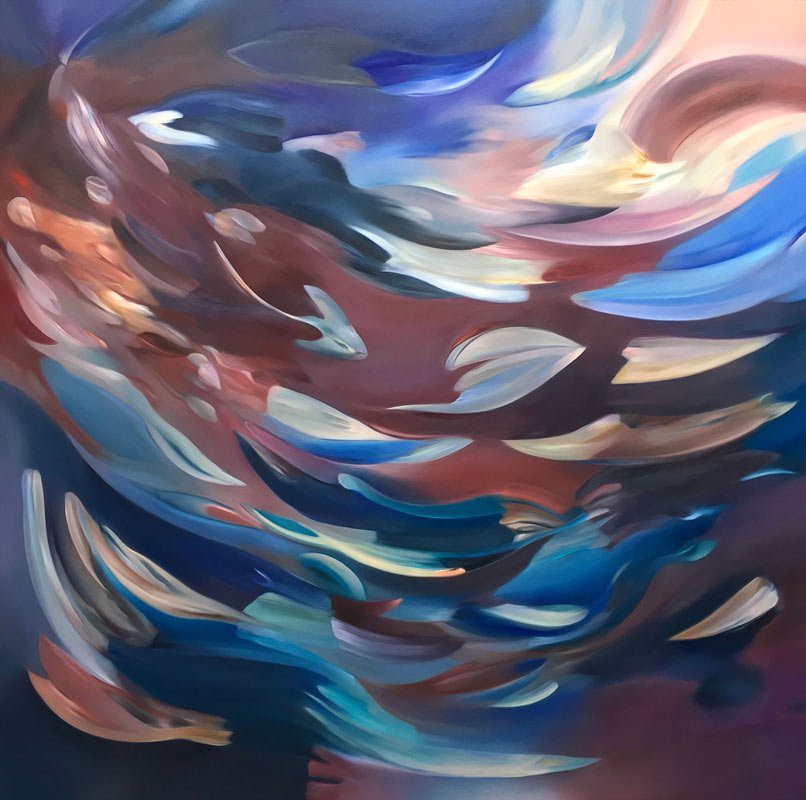
120cm x 120cm
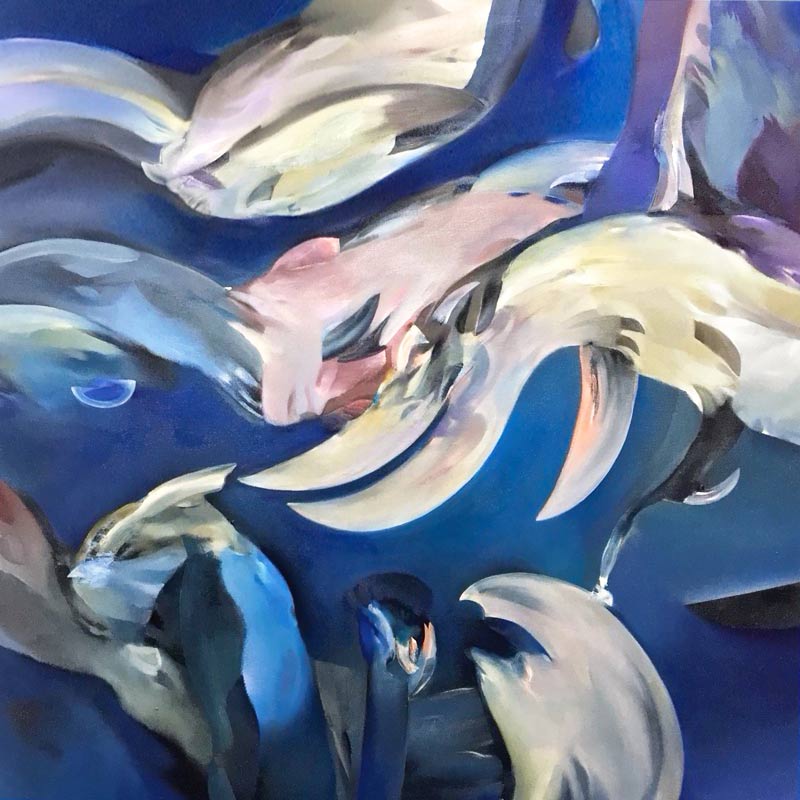
120cm x 120cm
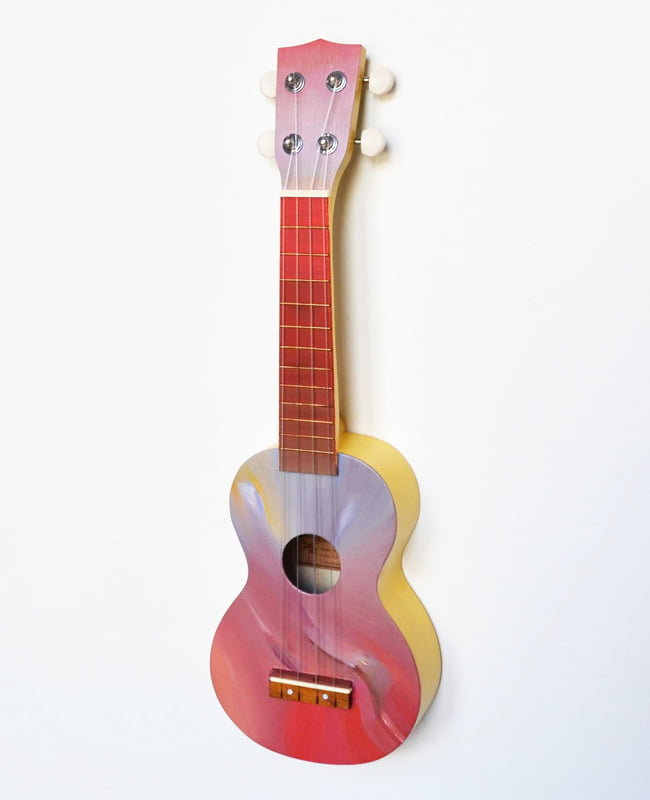
Artistically Embelished Ukulele
Born in Belgium and based in Perth, Stephanie Reisch is an early career artist who explores mystical and shamanistic precepts through notions of trace and essence. Her work is a fascinating exploration of our conscious responses to art and the unencumbered responses of animals. Seeking to ‘speak to the deeper parts of our awareness’ Stephanie’s abstract paintings often incorporate ground animal bone or tissue which become a constituent part of the paint, allowing the vital spirit of the animal to emanate.
Taking inspiration from the methodology and intentionality of pre-historic cave painters adds a further layer to Stephanie Reisch’s work as she seeks to integrate the past, present and future meanings into her art.
Artist Statement
Stephanie Reisch paints with a nod to prehistory. Indistinct animal forms resonate through her abstract painterly compositions, which reach into a realm of higher consciousness, instinct and the past. Hidden within the painted surfaces can be the animals themselves – a piece of bone or tooth or claw, ground into the paint, carrying the potency of its own history.
Your practice is described as shamanistic …
My work is certainly influenced by shamanic precepts and some of my conceptual enquiry is informed by that ecology of ideas, but I would not call it shamanistic in and of itself. My practice does seem to share a lot of common ground with shamanism and it’s helped give my work context, direction and clarity. Shamans gain insight from the knowledge embedded in nature, so it is not too dissimilar to what I do when working with animal-derived materials.
What importance do animals have in your practice?
The animal operates in a world of instinct and on a plane of pure sensation; humans operate within a less holistic realm, which is saturated with the mental noise that accompanies higher-level consciousness. My work attempts to speak to the deeper part of our awareness and to elicit responses from our animal selves. I regularly go back to animals in my practice to help invoke sensibilities that bypass the consciousness of the observer.
How does the physicality of animal materials inform the two-dimensional composition of your paintings?
The paintings always retain some reference to the animal subject, however the process is less about image-making and more focused on activating the surface through the layering and interaction of symbolic materials. I often let the natural motility of the paint guide me around the canvas and this leads to interesting compositional tensions as formal elements converge with gestural mark-making.
How is the act of grinding animal bones significant to the works?
My fascination for bone and dead animal tissue plays an important role in my practice. Deriving pigments from nature for the purpose of painting has always involved grinding down the material to some extent so that it can be carried by the medium. I’ve never thought of paint as a purely technical substance but rather as having its own significance and potency, so when I work with an animal fragment, whether it is a piece of bone, a tooth or a claw, I’m working more with the history contained within it as opposed to the object itself. That idea in itself, working with the unseen, appeals to me a lot.
How does this connect you to the works?
I’m always trying to interpret those subtle exchanges between materiality and life. When an animal ceases to operate as an object or a condition, it can be experienced as a type of intensity, which is then recorded in the paint. Through these connections and observations I’m exploring an alternative way of seeing that doesn’t necessarily occur through the eyes.
What are the lessons you derive from the creative processes of the first, prehistoric artists, who painted on cave walls?
Their intentions were very different. I imagine them travelling down long, dark and dangerous tunnels to mark walls by firelight. They’d use earth pigments, blood, saliva and animal fat to bring these human and animal forms into the physical world. The images would be guided by the morphology of the cave surface and accompanied by an animal tooth or claw embedded alongside. The interplay of light and shadow from the torches would have given the images dimension, resulting in that magical, floating quality I aspire to create in my own work. The possibility that these artists worked in complete darkness is even more intriguing as it rejects the idea that art should be looked at. My work at times feels like an extension of what these early image-makers were trying to do, by internalising some of those ideas. I like to weave meaning from things that did exist, do exist and will exist.
How do you balance control with freedom in your painting?
It is mostly an intuitive process but there is a consistent methodology at play too. I begin by laying down gestural marks with oil sticks and dry brushwork and then build dimensionality over time. After that I work between forming and unforming the visual elements, so there are a lot of layers of history being recorded, something which isn’t always obvious in the final piece. It’s a continual process of drawing out shapes and pushing them back through a type of creative entropy. I occasionally think of my process as reverse archaeology.
What challenges do you find painting large-scale works?
An important part of my process involves rotating the canvas every so often in order to dislodge the visual elements, which helps keep them in motion and within the bounds of the frame. This becomes more difficult the larger I work, as the scale influences the length of each interval between turns. I also find the longer I wait between rotations the more static the work becomes so it’s important I don’t linger too long. The square format seems to work best for me, as the rotations remain relatively balanced, so breaking away from that has been particularly challenging. There is also the challenge of getting lost in single moments on the canvas and losing hours.
What’s next?
I will be showing again with my gallery, Linton & Kay, later next year. I also have a research project, Water & Stone, opening at Heathcote Museum & Gallery (in Melville, WA) in March that explores the sibylline navigations of the jellyfish in relation to the Swan River. It’s an experiment with new materials and ideas through expanded drawing and touches on themes that include myth, ritual and unchartered worlds.

